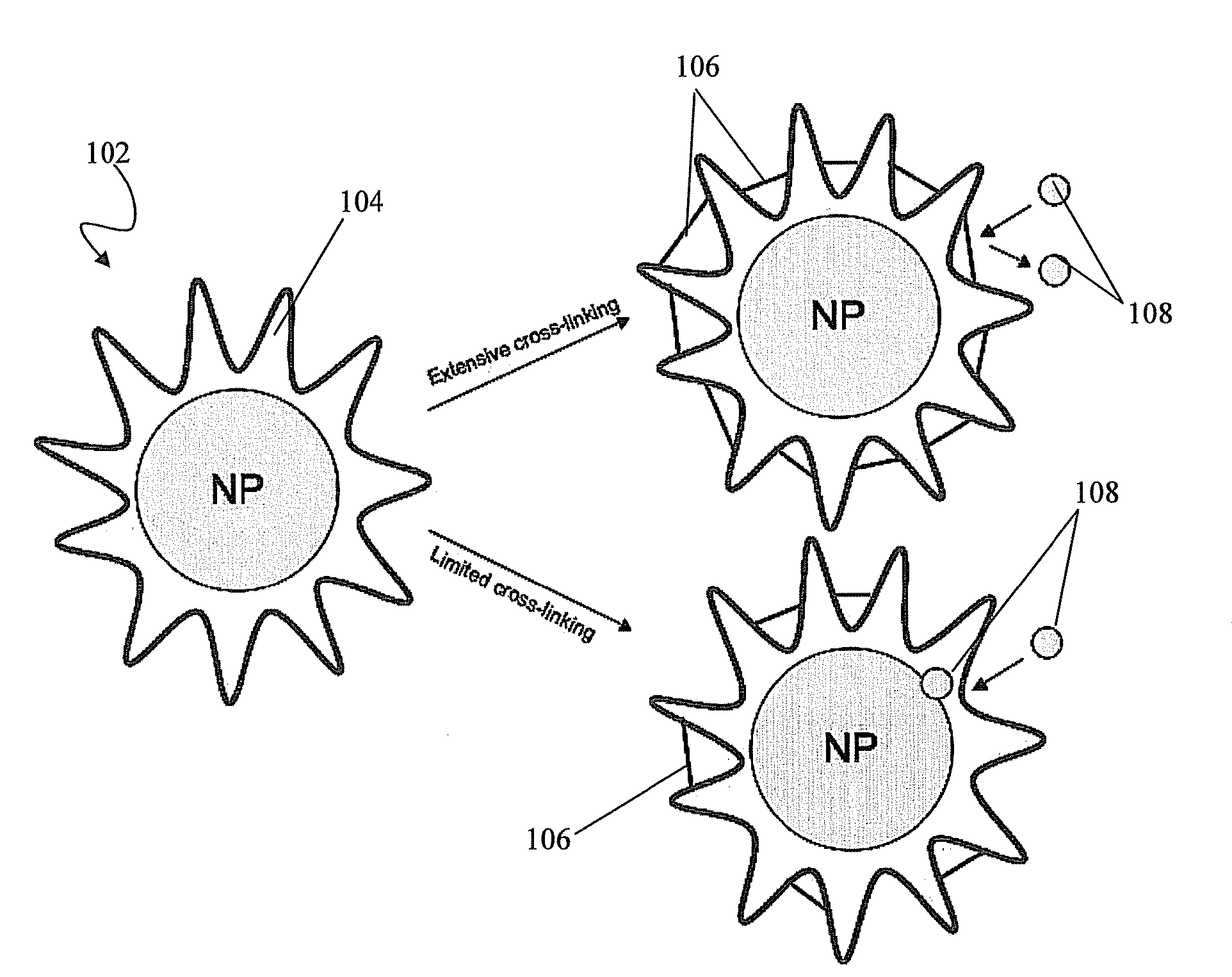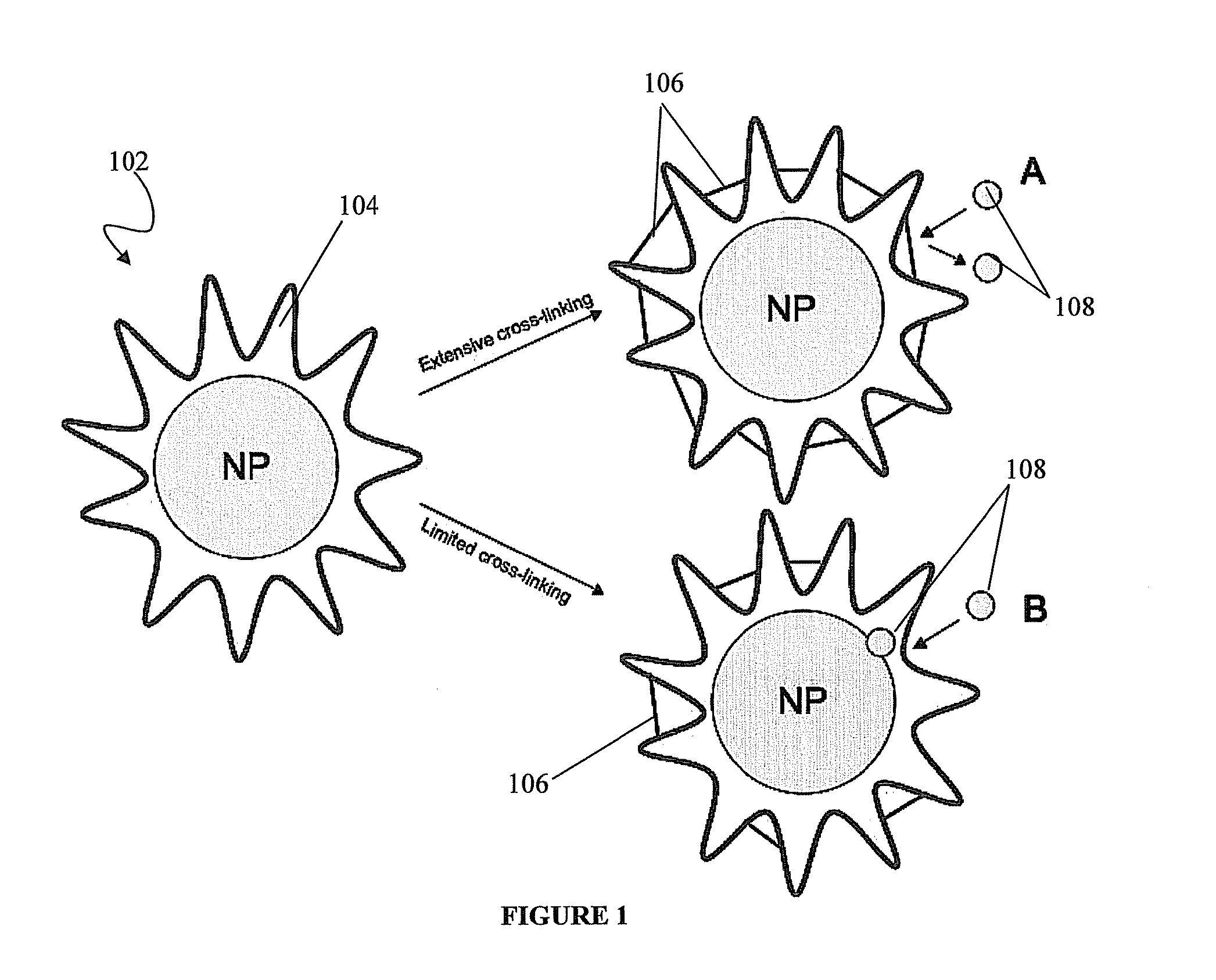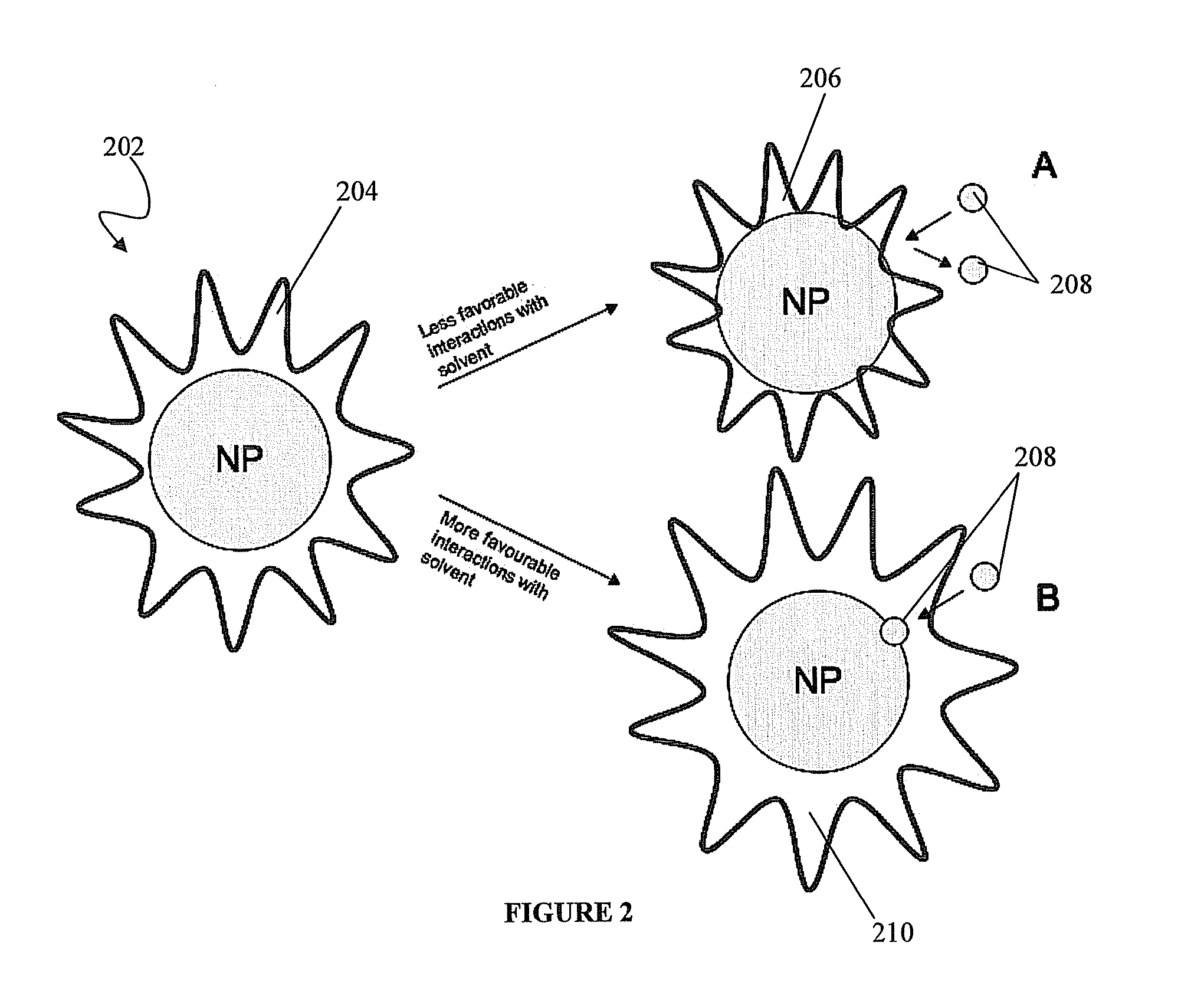Nanoparticles confined in polyelectrolytes
a technology of nanoparticles and polyelectrolytes, applied in the field of nanoparticles confined in polyelectrolytes, can solve the problems of many interesting laboratory properties not being realized, and achieve the effect of increasing or decreasing the thickness or density of the layer
- Summary
- Abstract
- Description
- Claims
- Application Information
AI Technical Summary
Problems solved by technology
Method used
Image
Examples
example 1
Preparation of CdTe-CdS Nanoparticles Encapsulated in PAA
[0085]A 10 mM sodium tellurite (Na2TeO3) solution was prepared by weighing out the appropriate amount of sodium tellurite and dissolving it in deionized water (ddH2O). A heating mantle was heated to >100° C. 50 mL of Cd-PAA solution (1.67 mM Cd, irradiated for 1 h with 254 nm light) was put into a one-necked round bottom flask (rbf). Trisodium citrate (50 mg) and sodium borohydride (NaBH4, 25 mg) was added in one portion to the stirred Cd-PAA solution. 1.25 mL Na2TeO3 solution, prepared above, was added to the Cd-PAA solution. A condenser was put on rbf and the reaction mixture was heated to reflux in the heating mantle and lef to reflux for 4 h. Meanwhile, another heating mantle was preheated to 50° C. After 4 h of reflux, the reaction flask was taken out of the heating mantle and let cool to room temperature. Meanwhile, a 100 mM solution of thioacetamide was prepared by weighing out the appropriate amount of thioacetamide an...
example 2
Preparation of CdTe-CdS Nanoparticles Encapsulated in PAA / PSS
[0086]A 10 mM sodium tellurite (Na2TeO3) solution was prepared by weighing out the appropriate amount of sodium tellurite and dissolving it in deionized water (ddH2O). A heating mantle was heated to >100° C. 50 mL of Cd-PAA / PSS (PSS is 5% or 25% of PAA by weight) solution (1.67 mM Cd, irradiated for 1 h with 254 nm light) was put into a one-necked round bottom flask (rbf). Trisodium citrate (50 mg) and sodium borohydride (NaBH4, 25 mg) was added in one portion to the stirred Cd-PAA solution. 1.25 mL Na2TeO3 solution, prepared above, was added to the Cd-PAA solution. A condenser was put on rbf and the reaction mixture was heated to reflux in the heating mantle and lef to reflux for 4 h. Meanwhile, another heating mantle was preheated to 50° C. After 4 h of reflux, the reaction flask was taken out of the heating mantle and let cool to room temperature. Meanwhile, a 100 mM solution of thioacetamide was prepared by weighing ou...
example 3
Preparation of CdTe-CdS Nanoparticles Coated with Bilayers of Polyelectrolytes
[0087]Samples of quantum dots coated with 1, 2, or 3 bilayers of PAA and PAH were prepared. The green CdTe-CdS quantum dots with a PAA stabilizer were prepared according to Example 2, purified by precipitation with ethanol, and reconstituted at 16 times its original concentration (on a solids basis). It was then diluted 333 times with deionized, distilled water (ddH2O). To 100 μL of this solution was added alternately solutions of PAH (MW=15,000, 40 μL, 0.03 mg / mL) and PAA-Na (MW=2,100, 5 μL, 0.3 mg / mL). After each addition, the mixture was put on an orbital shaker for 5 minutes and then the next solution was added.
[0088]For CdTe-CdS nanoparticles with one bilayer (i.e. after one alternate addition of PAH and PAA-Na), after one alternate addition of PAH and PAA-Na the solution was removed from the shaker and 90 μL of deionized, distilled water was added. For CdTe-CdS nanoparticles with two bilayers, after ...
PUM
| Property | Measurement | Unit |
|---|---|---|
| mean diameter | aaaaa | aaaaa |
| mean size | aaaaa | aaaaa |
| size | aaaaa | aaaaa |
Abstract
Description
Claims
Application Information
 Login to View More
Login to View More - R&D
- Intellectual Property
- Life Sciences
- Materials
- Tech Scout
- Unparalleled Data Quality
- Higher Quality Content
- 60% Fewer Hallucinations
Browse by: Latest US Patents, China's latest patents, Technical Efficacy Thesaurus, Application Domain, Technology Topic, Popular Technical Reports.
© 2025 PatSnap. All rights reserved.Legal|Privacy policy|Modern Slavery Act Transparency Statement|Sitemap|About US| Contact US: help@patsnap.com



